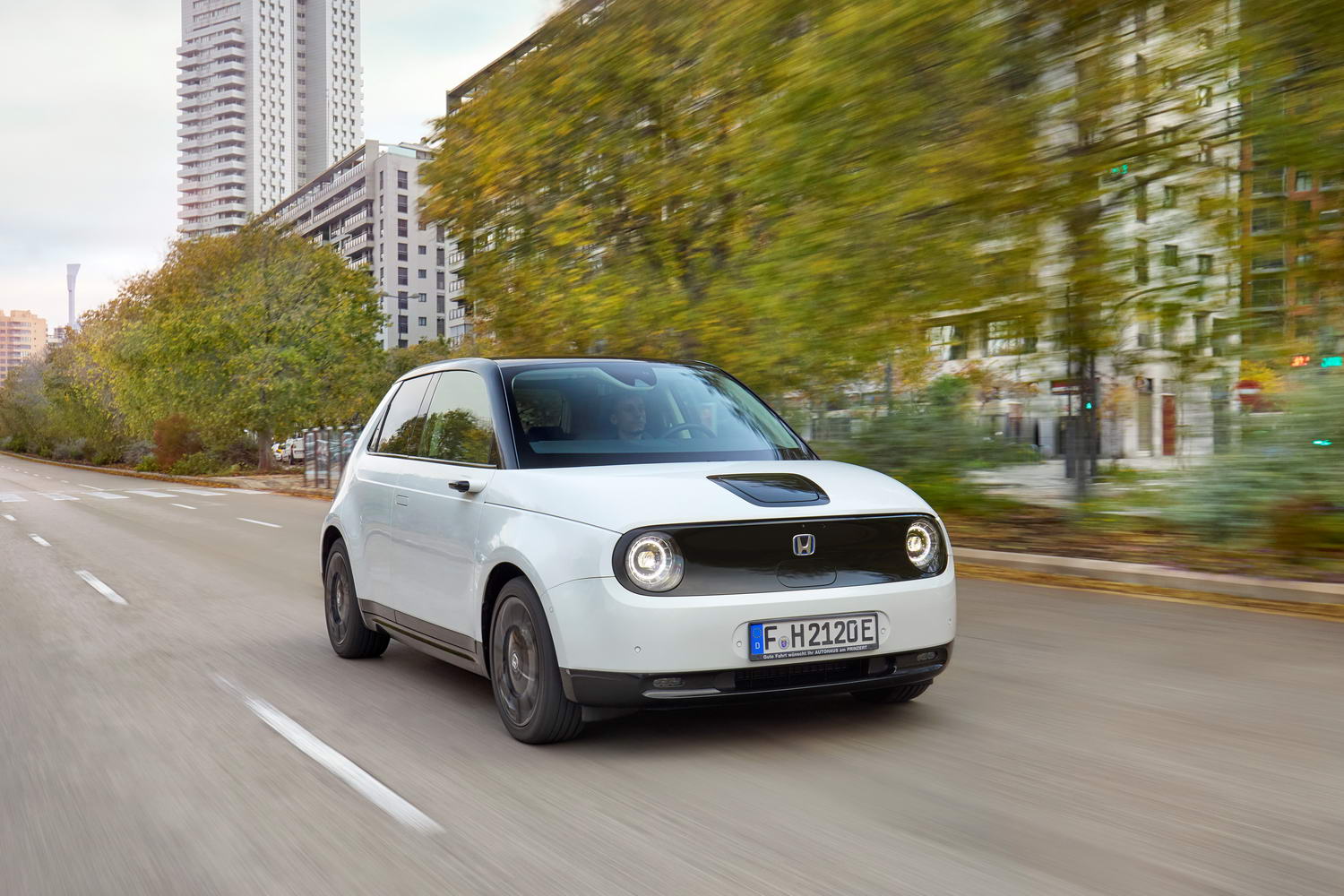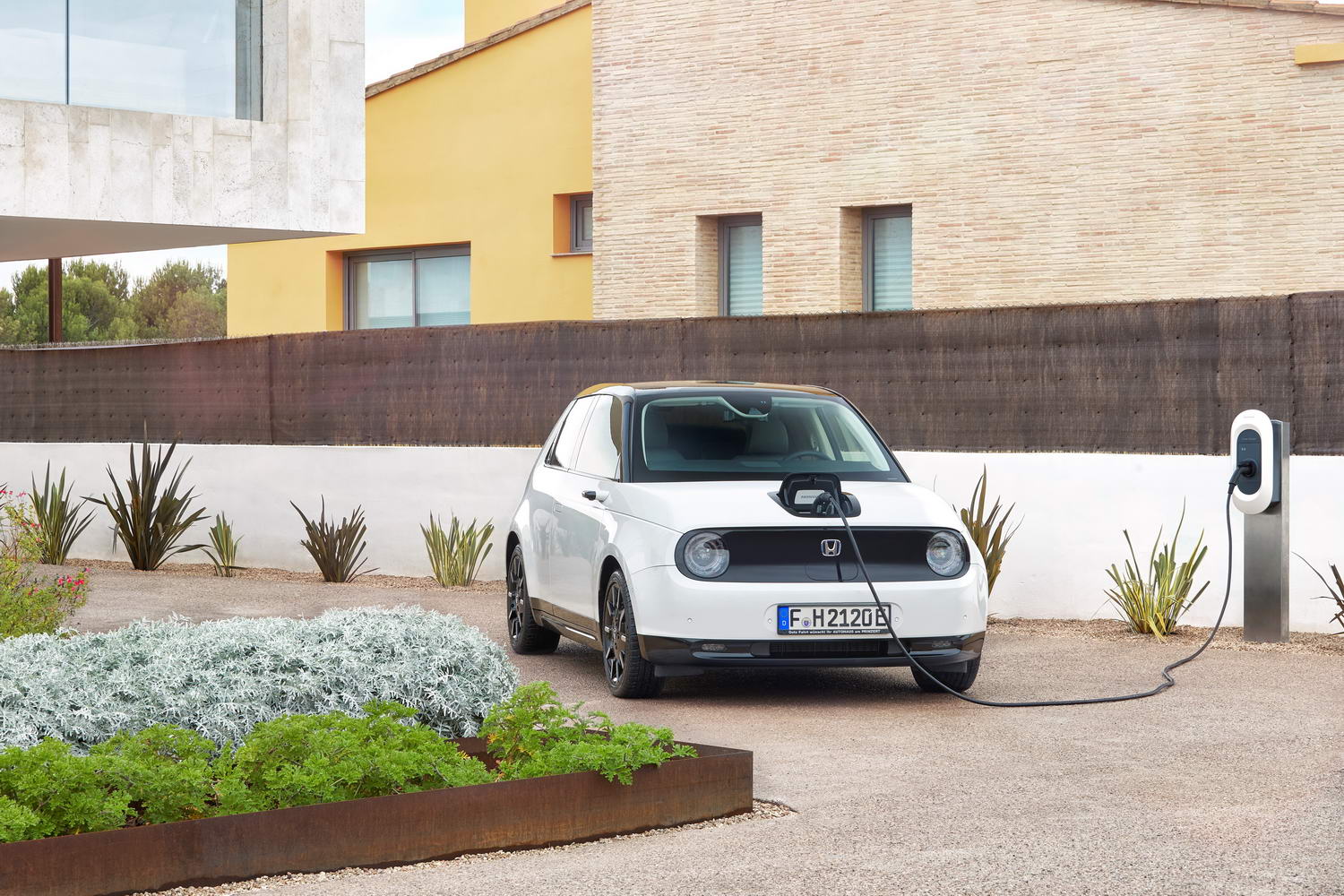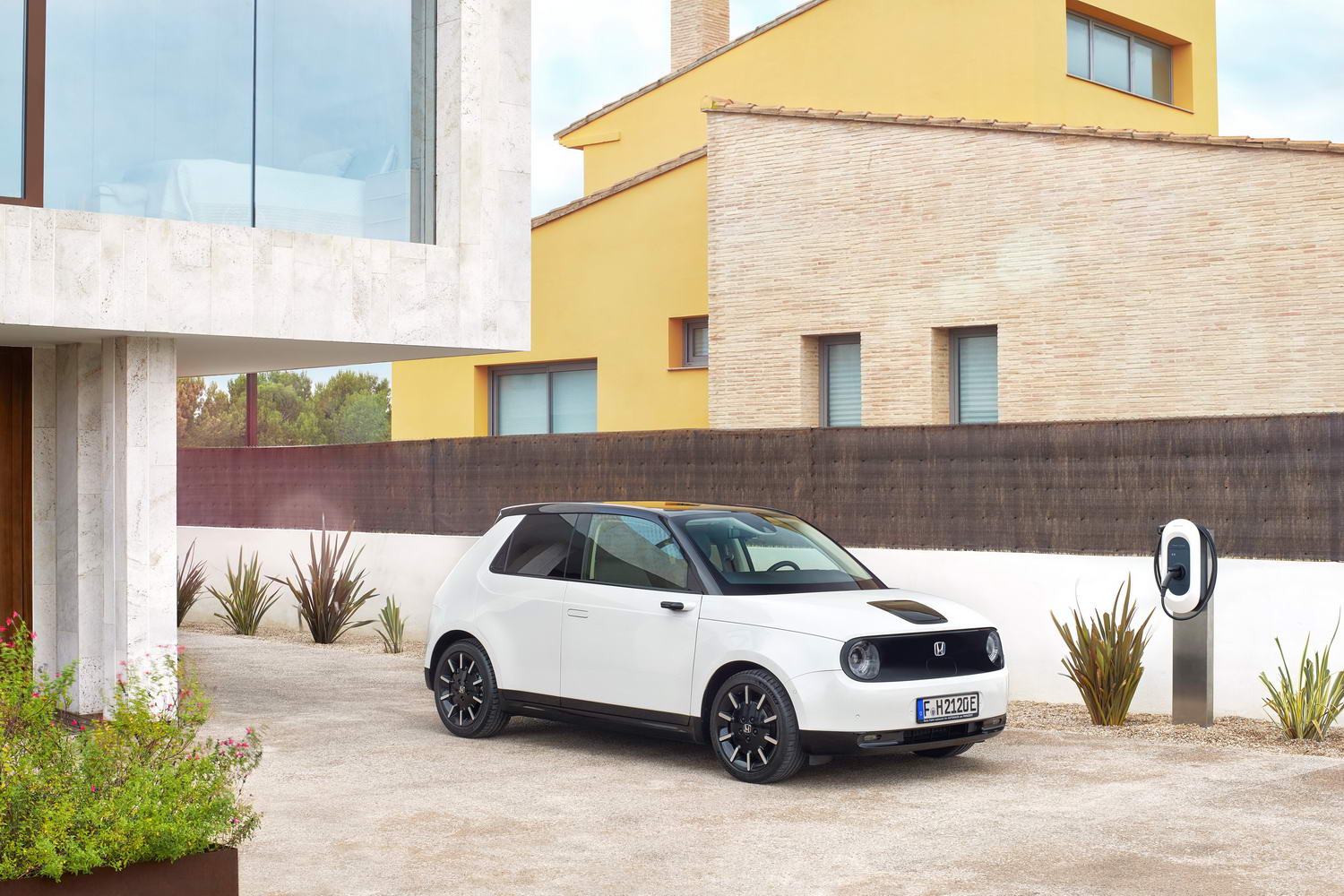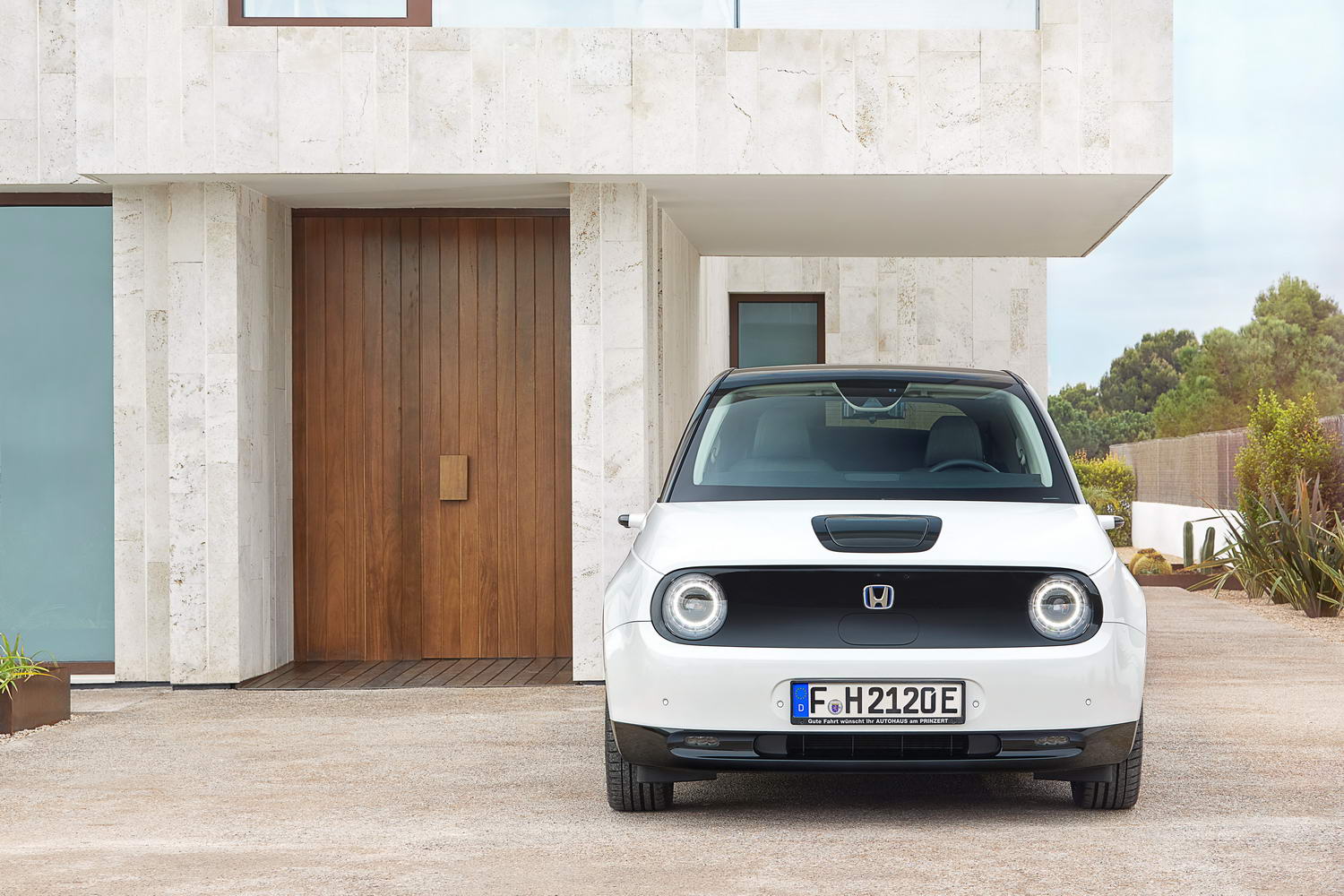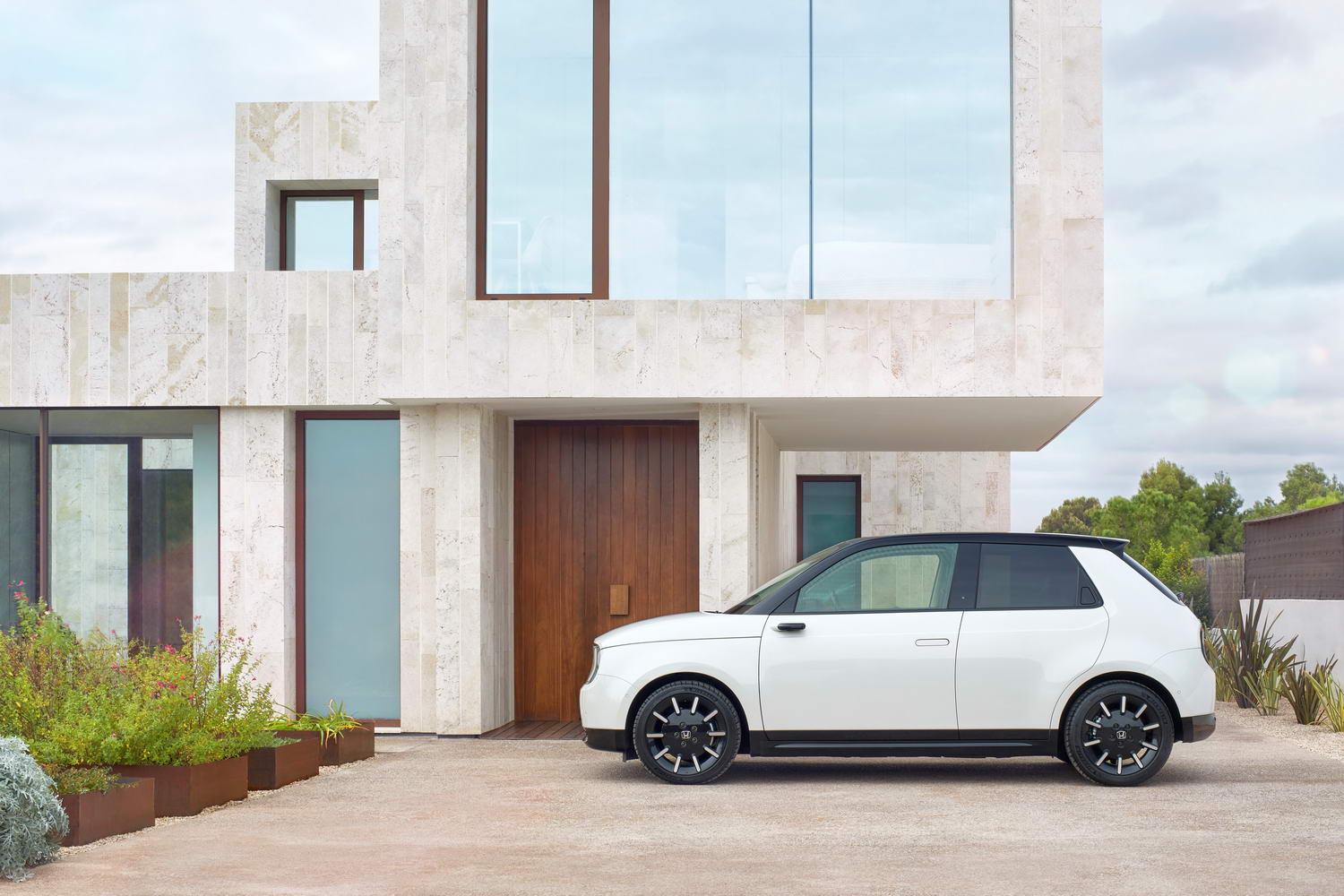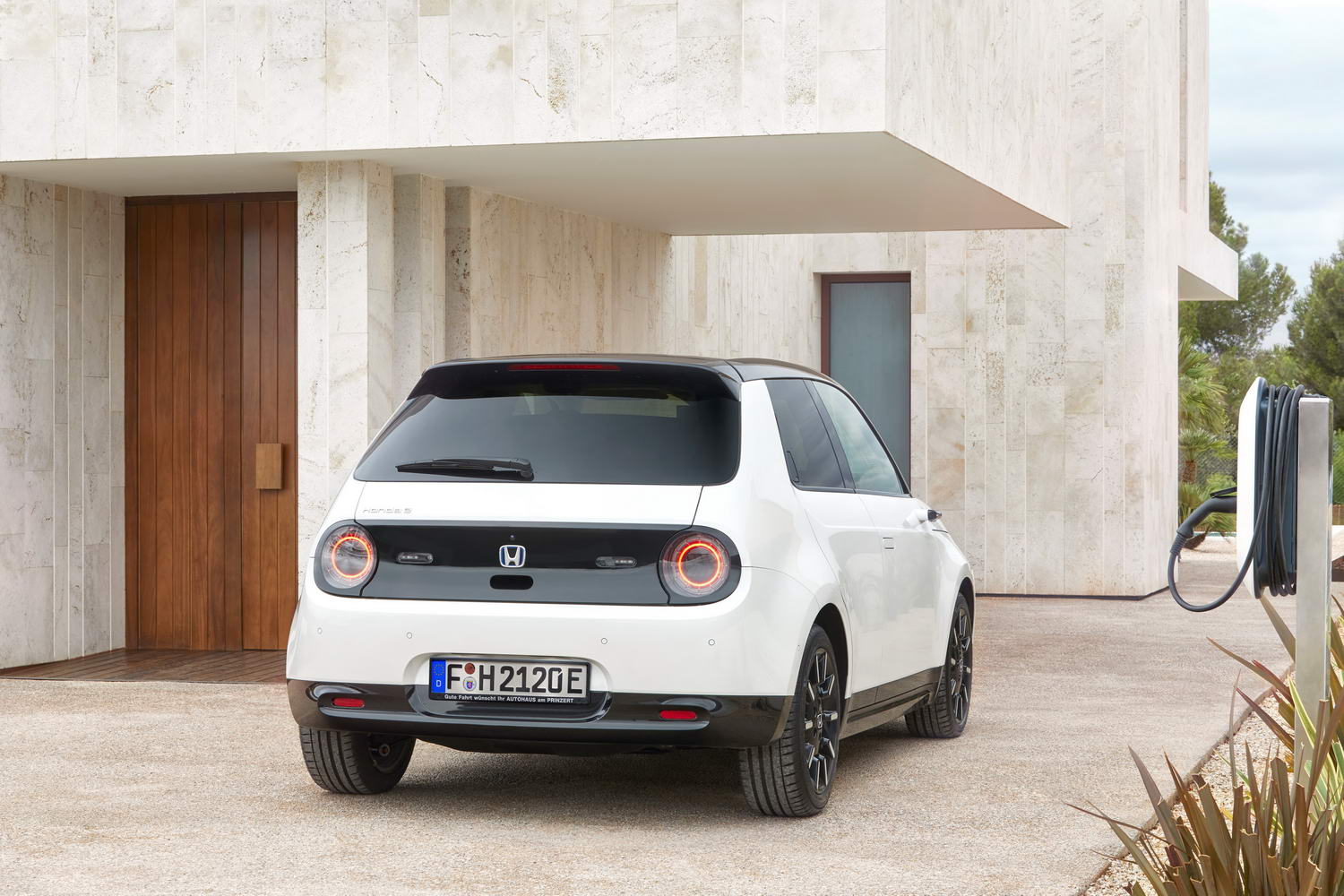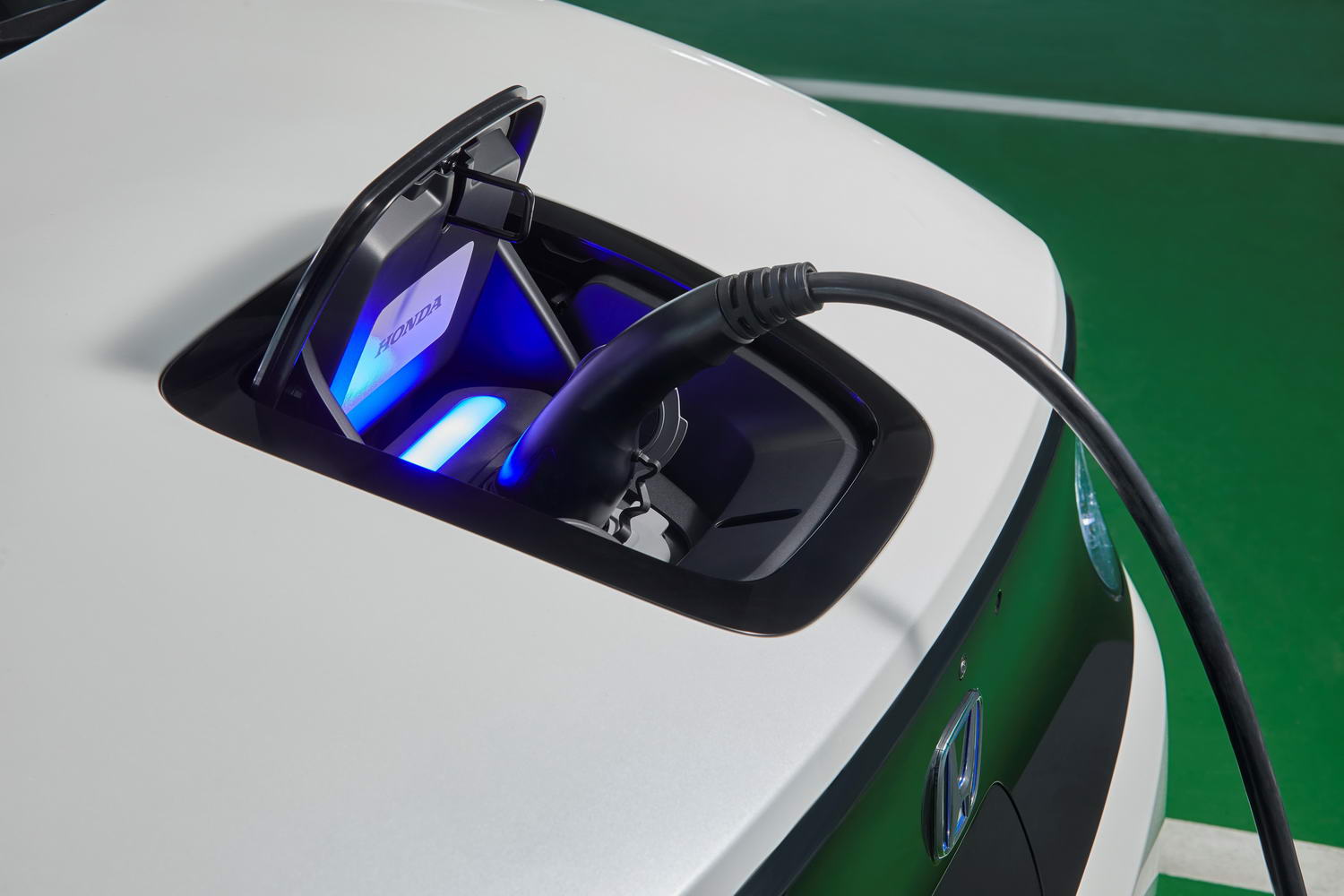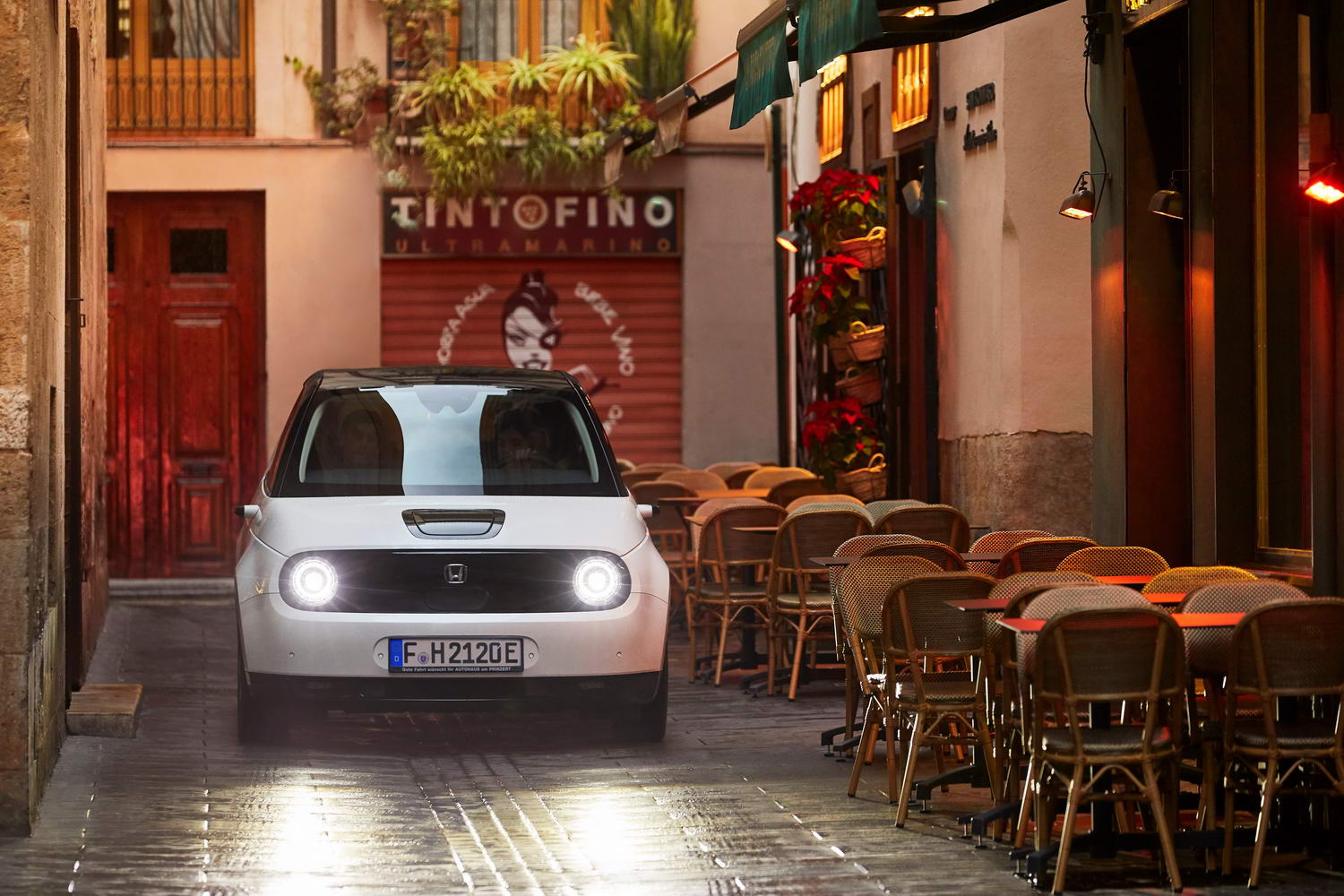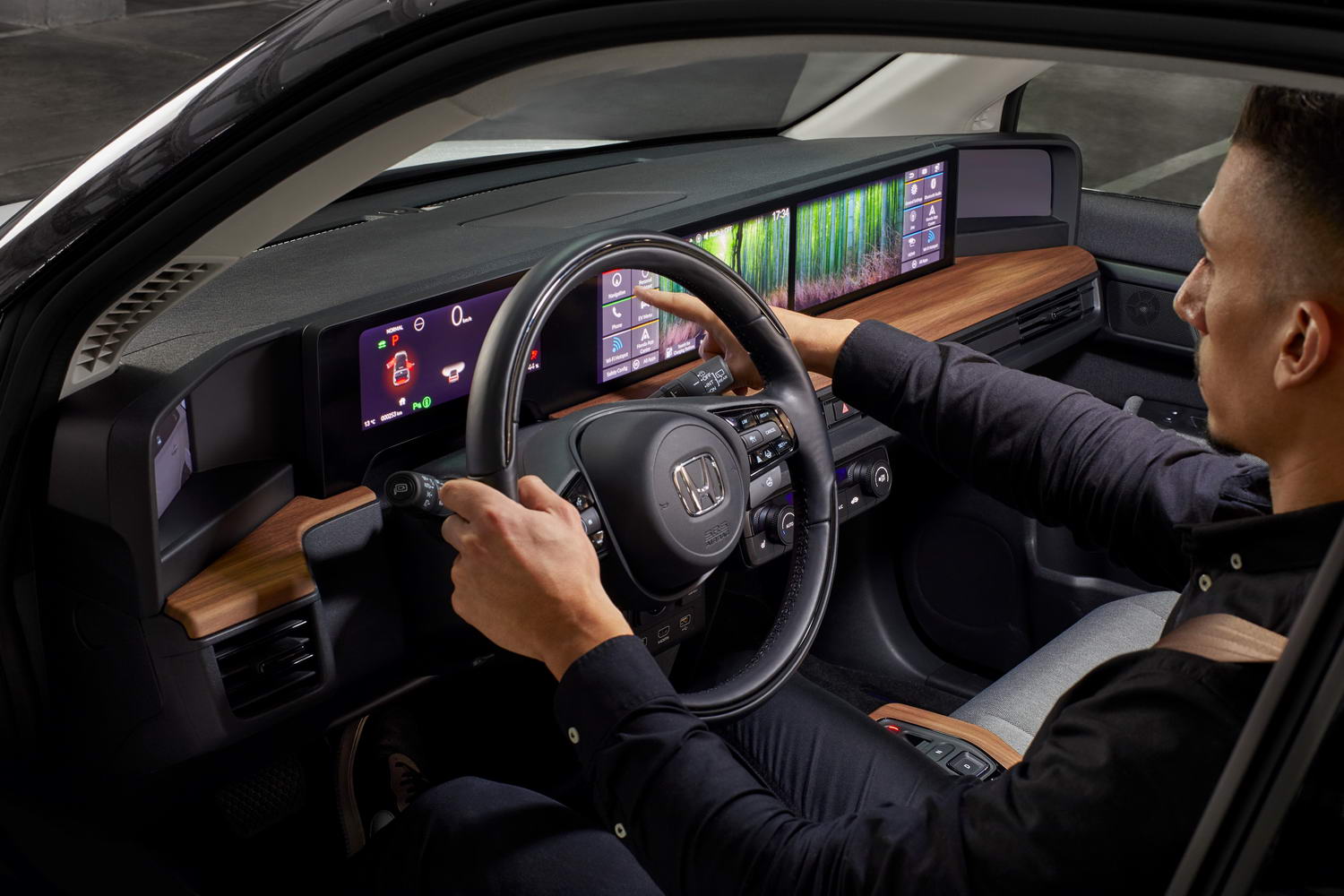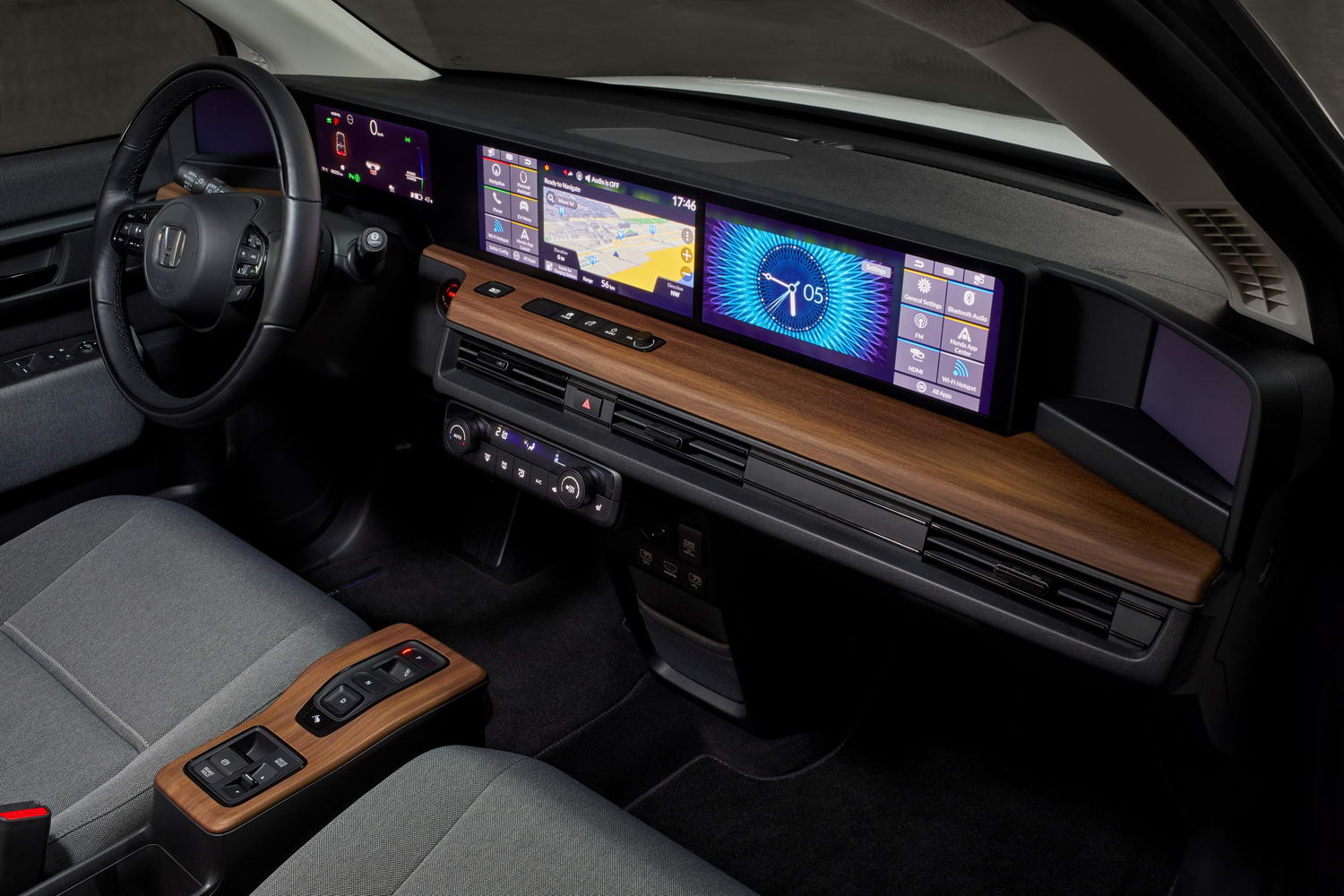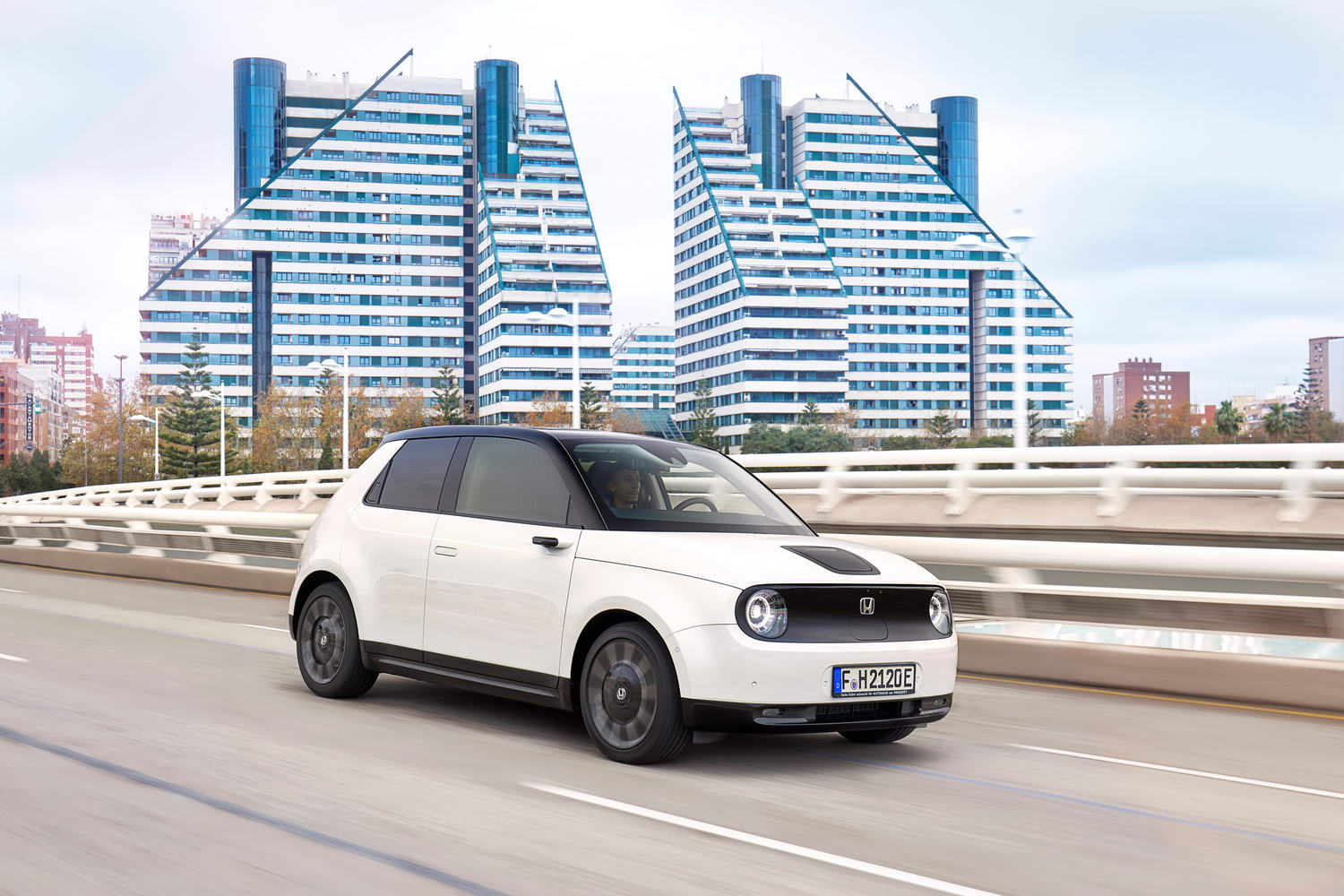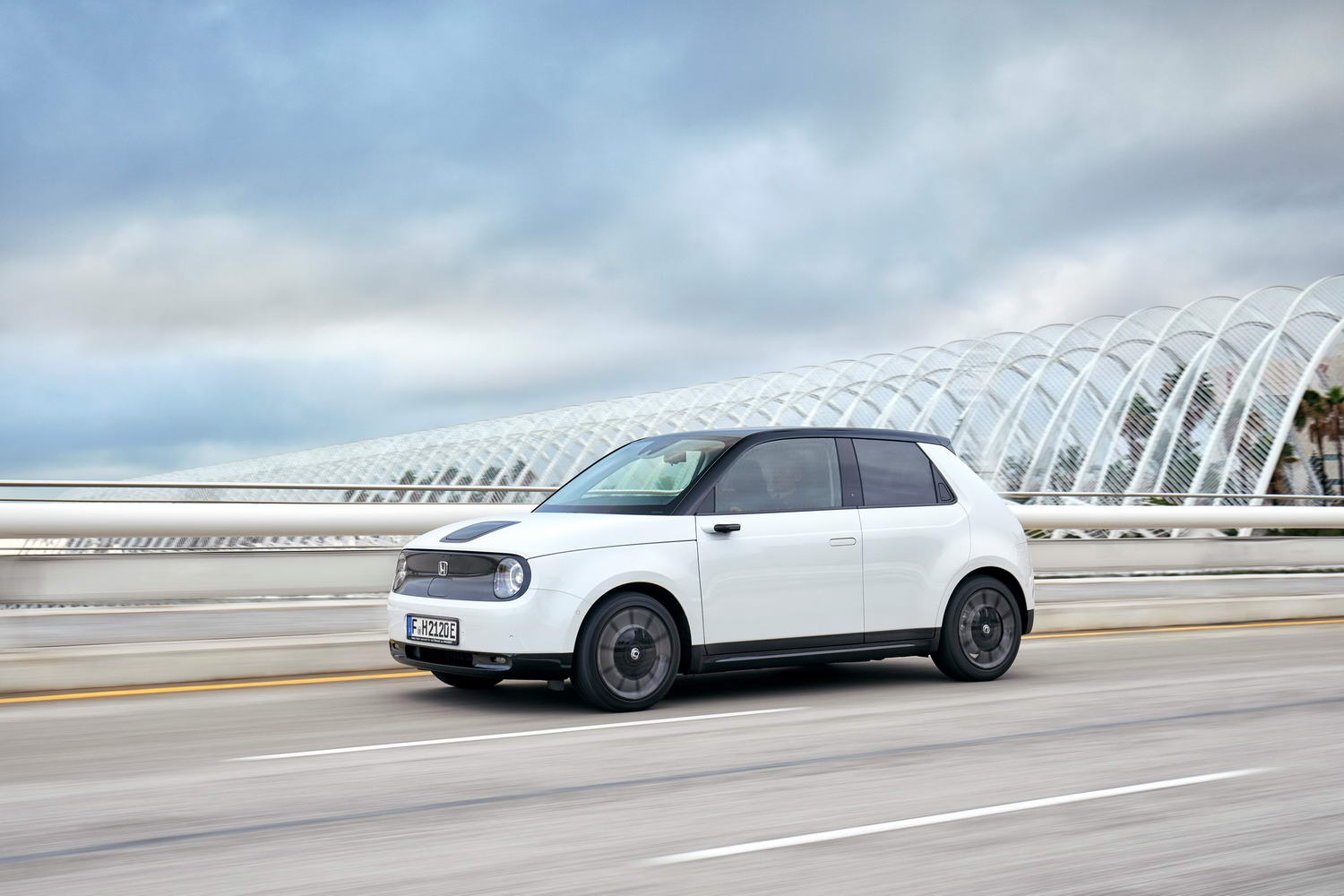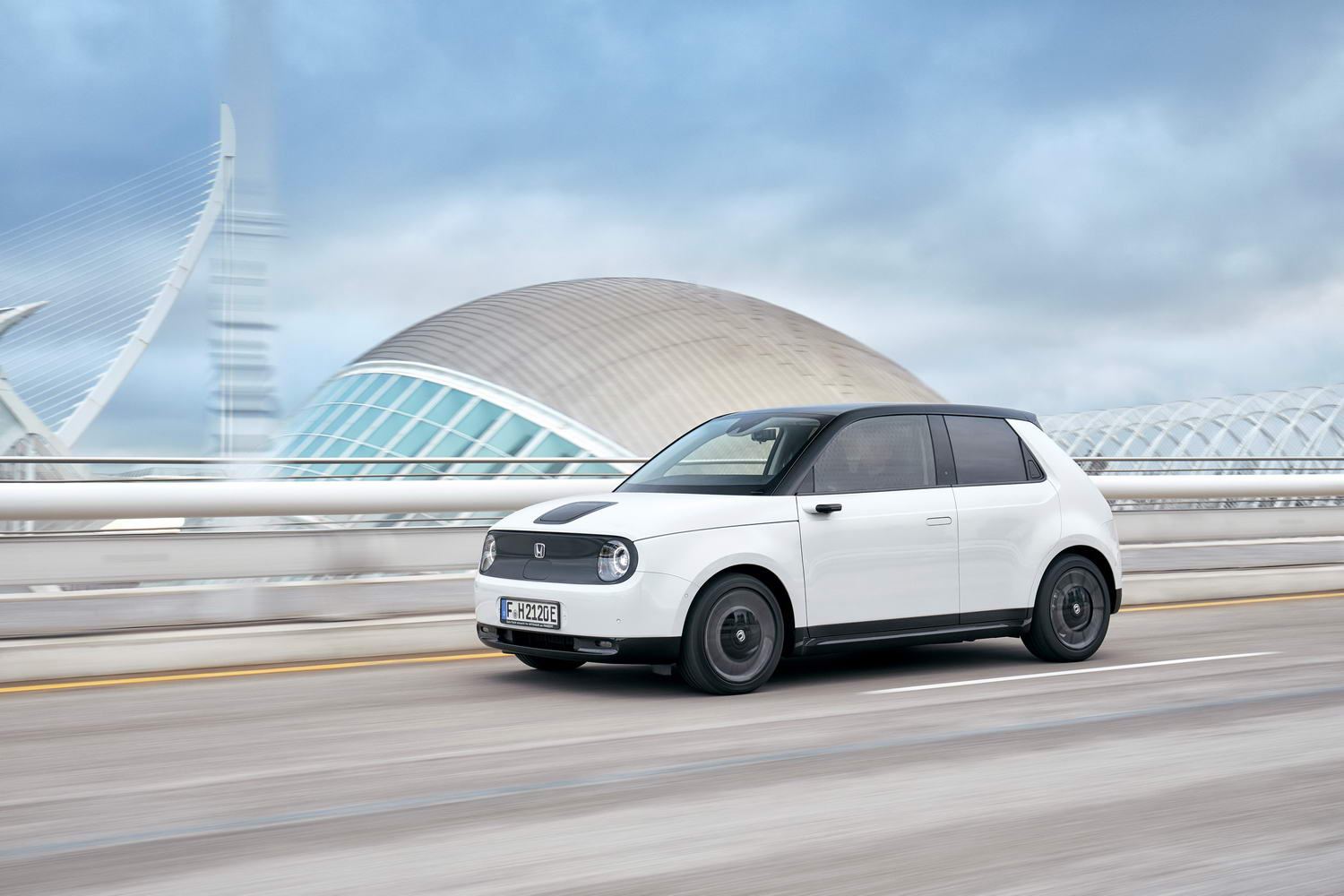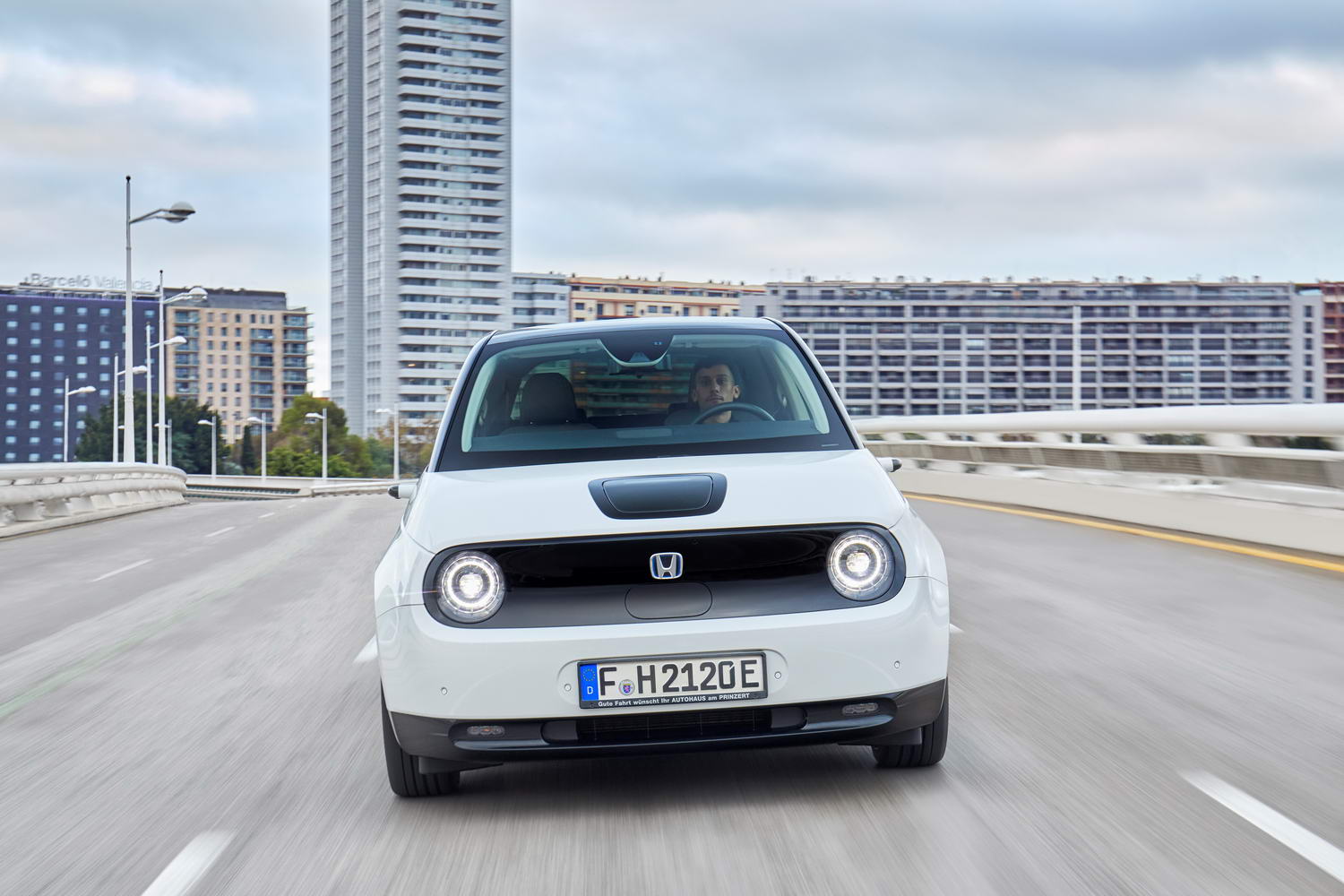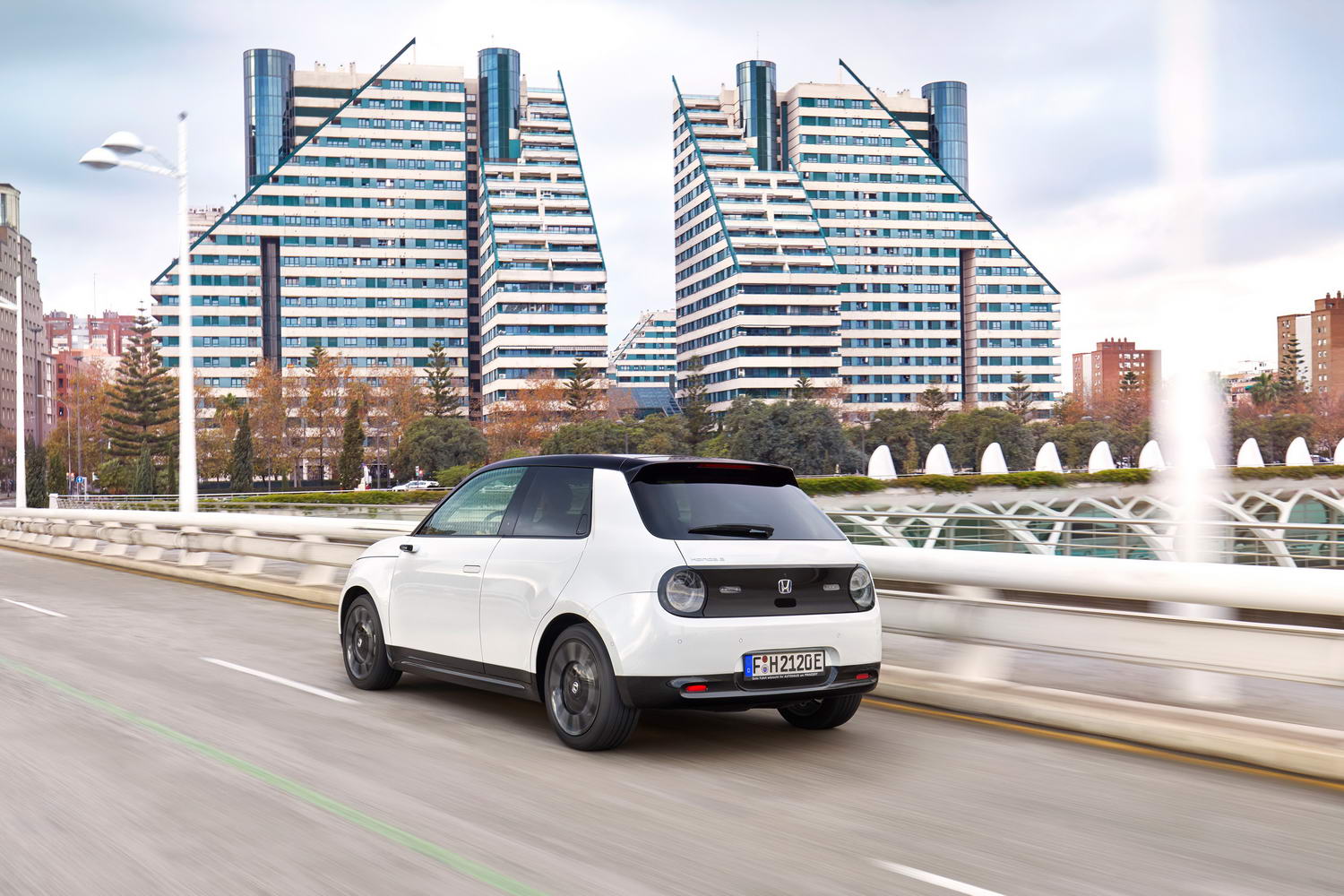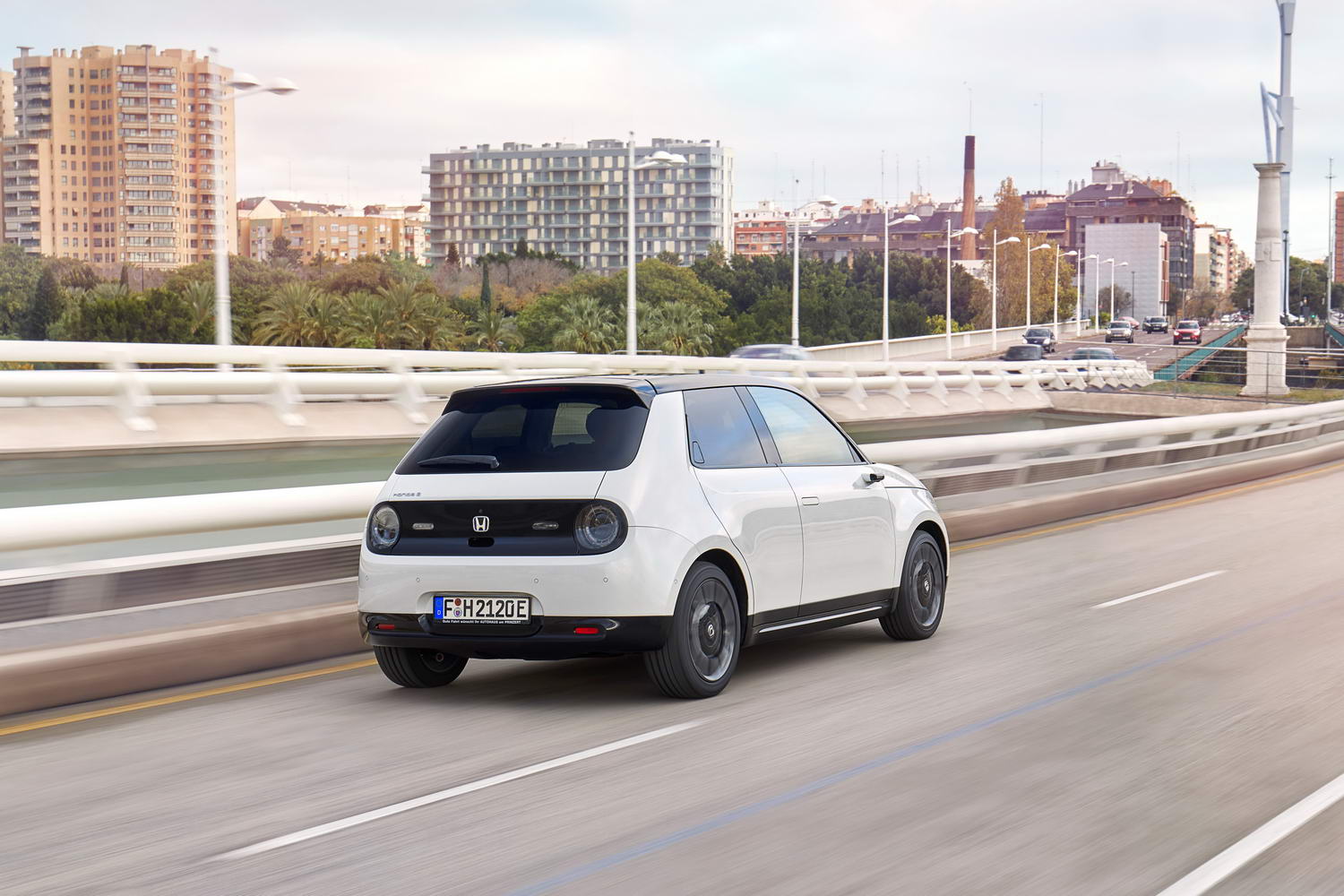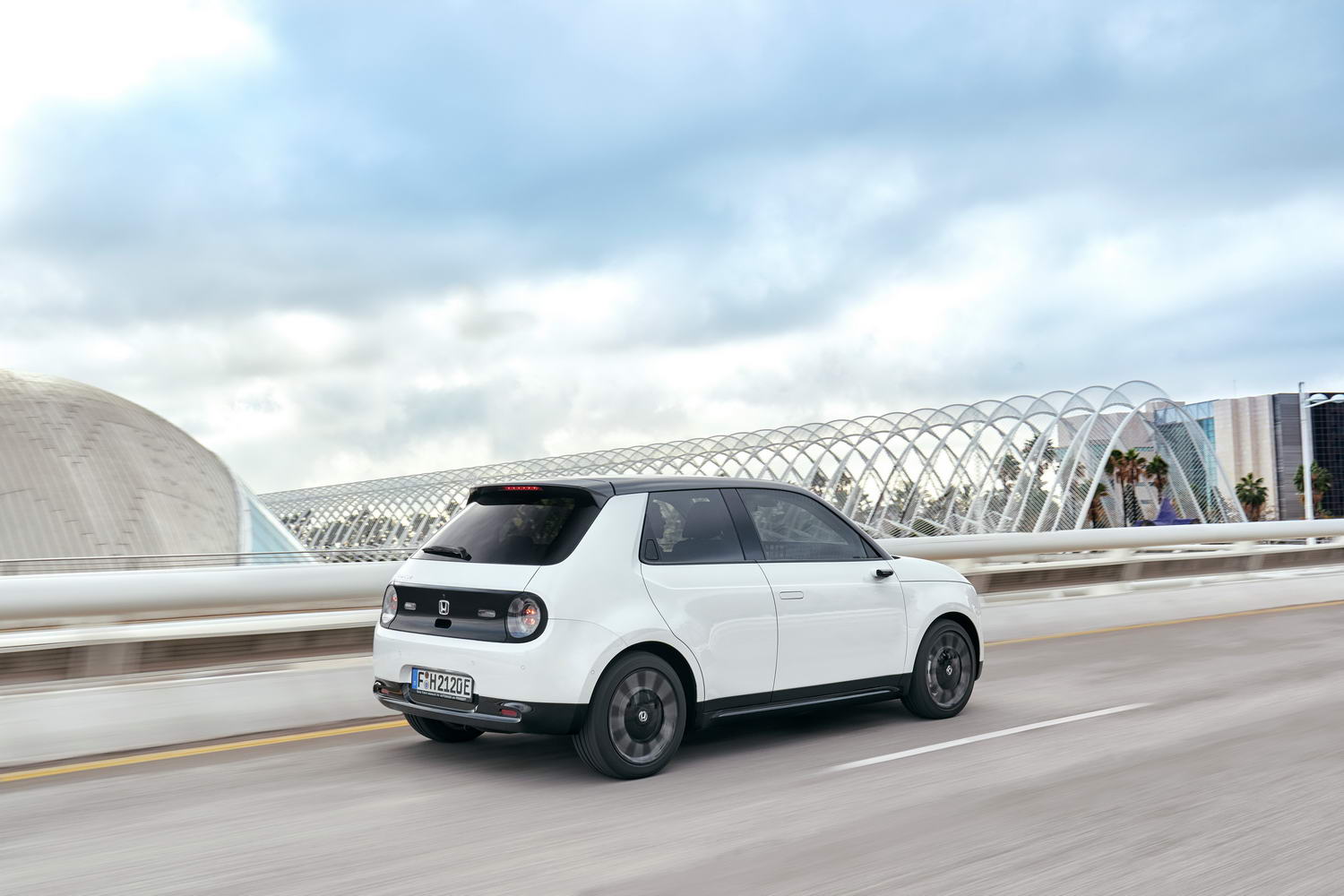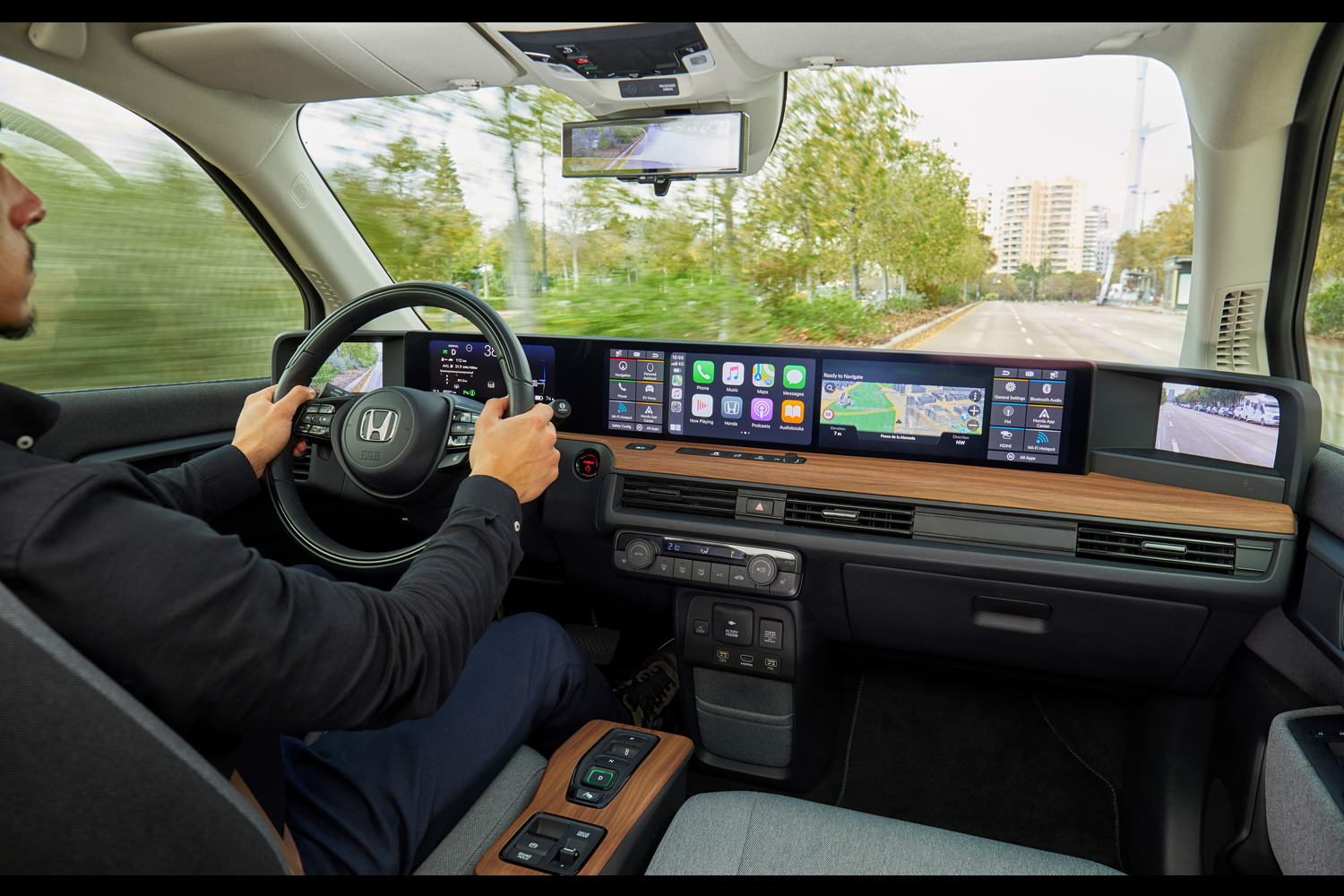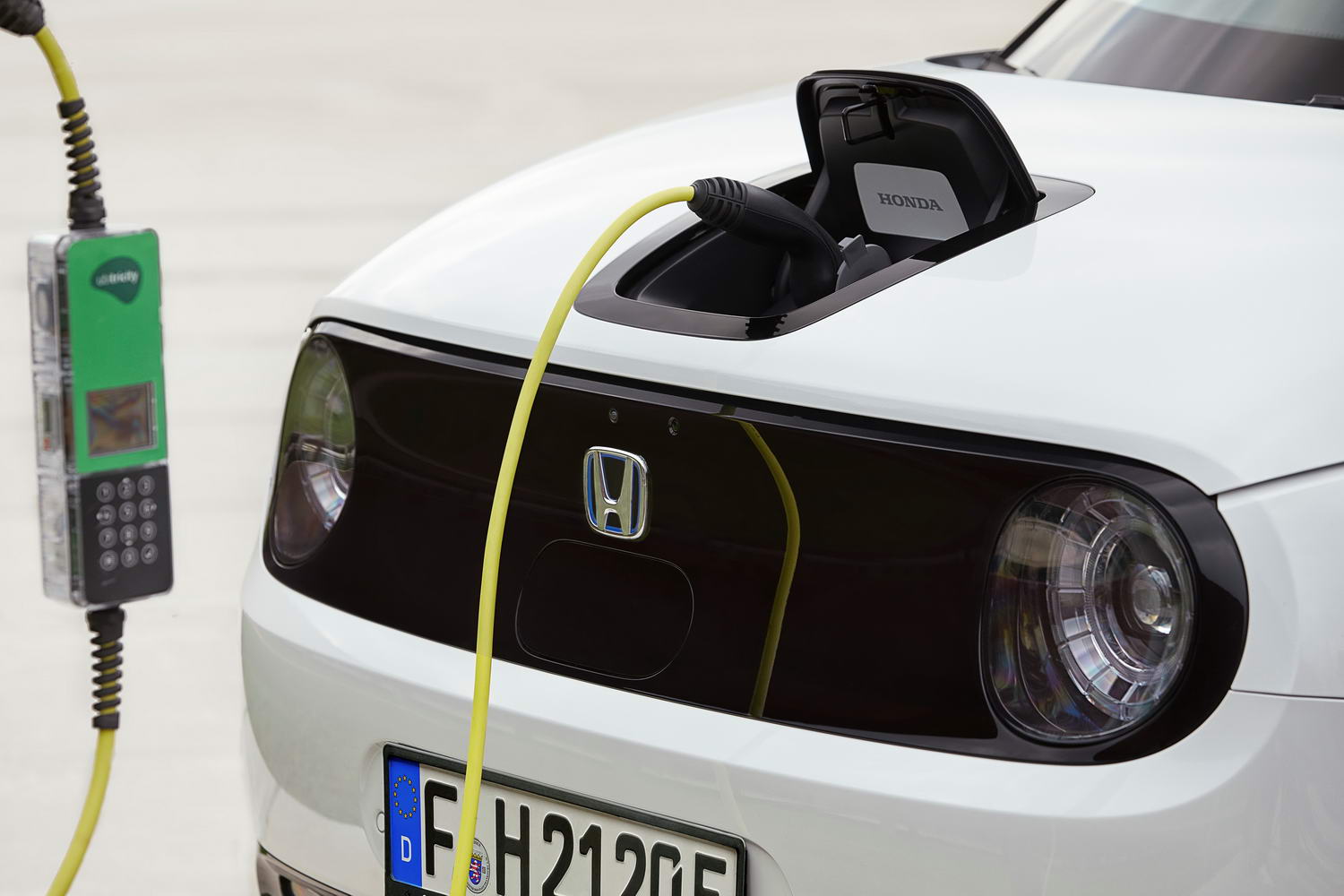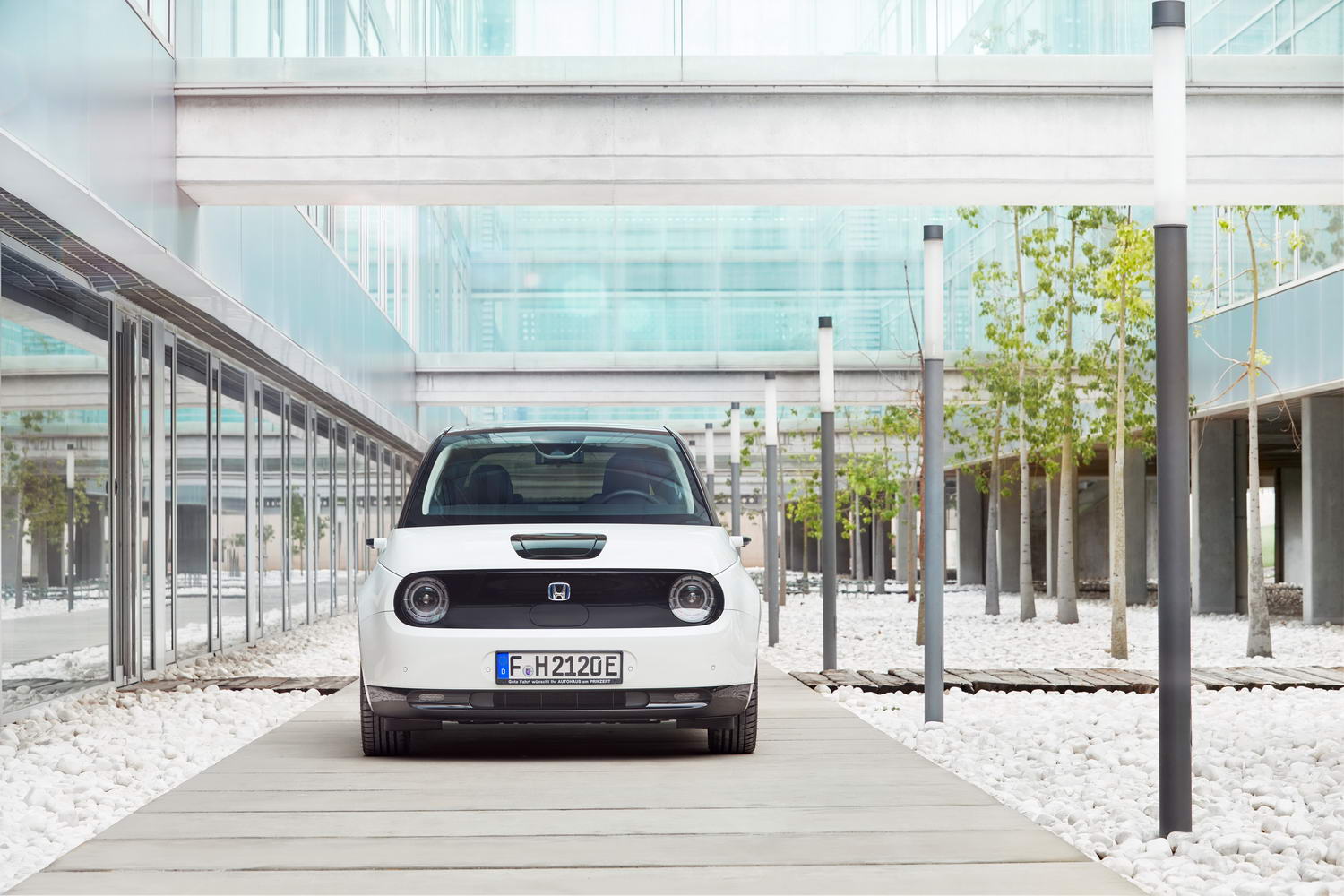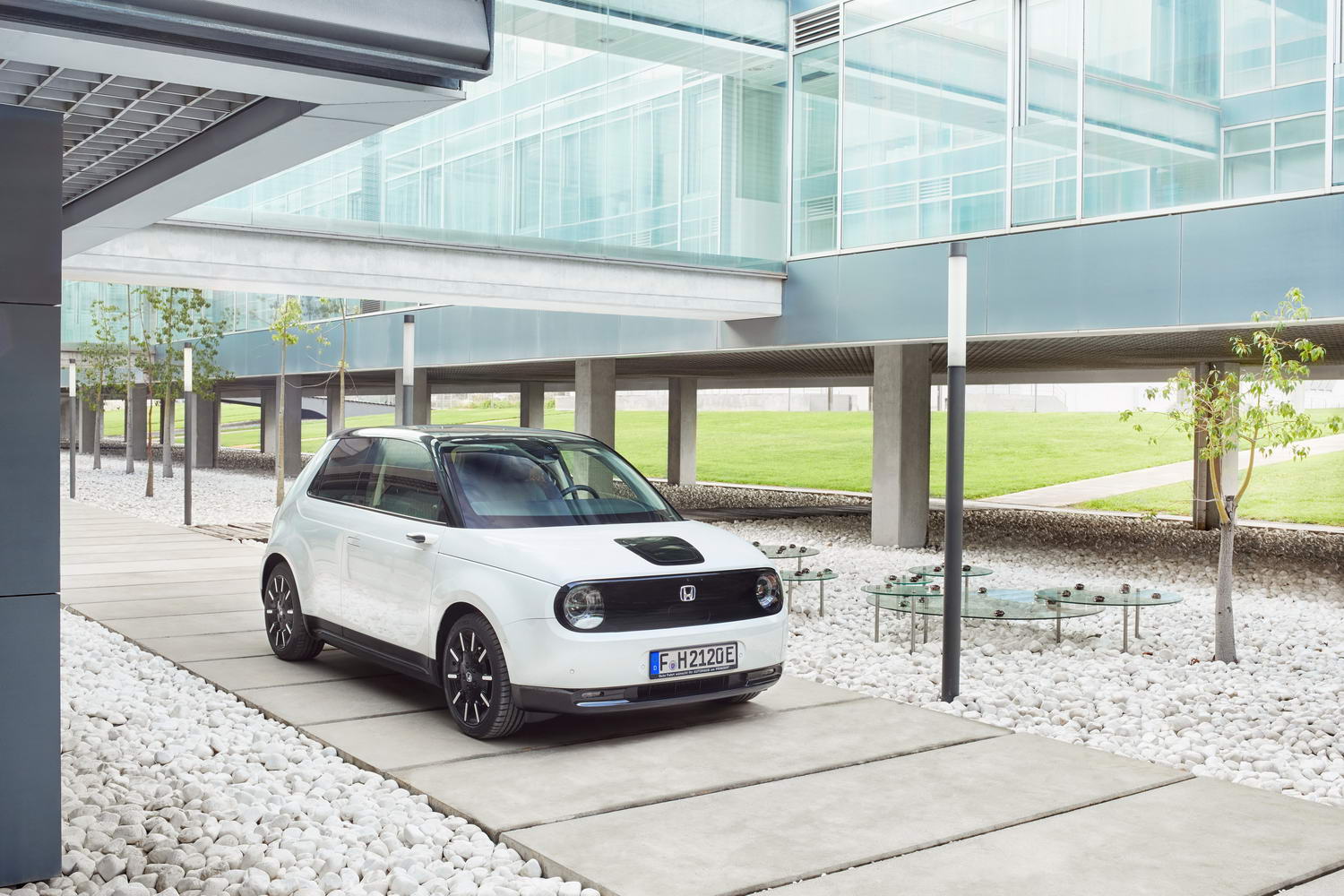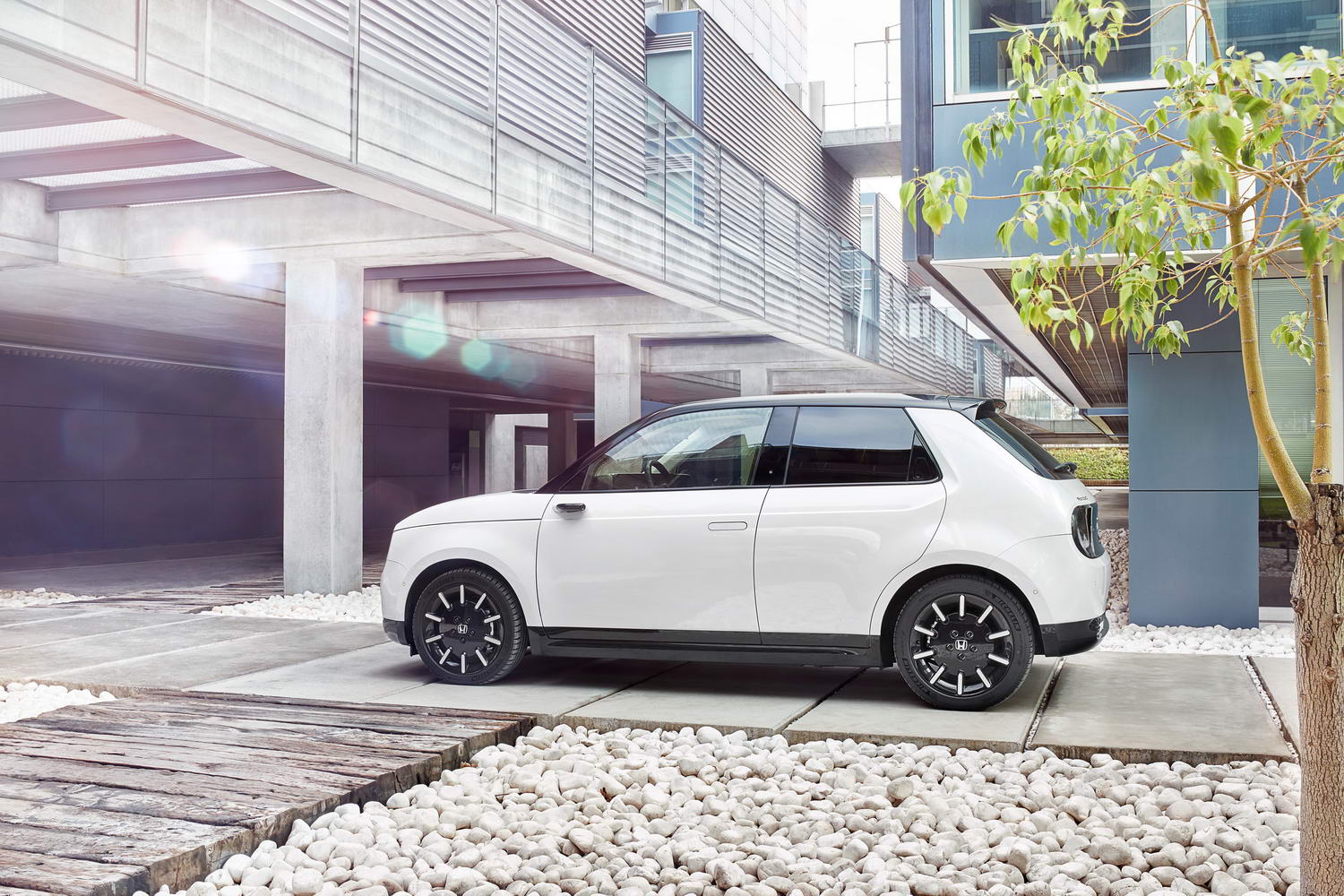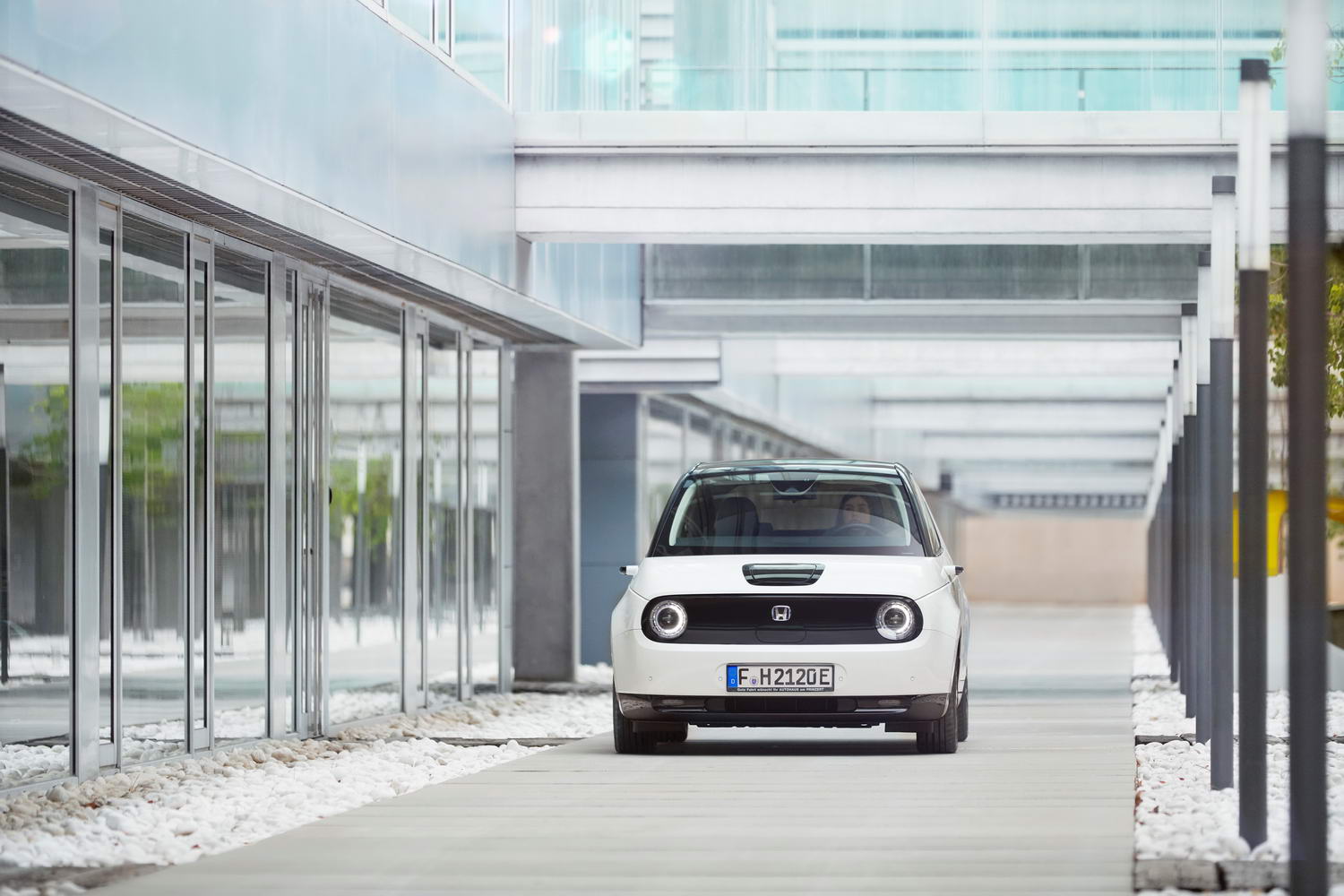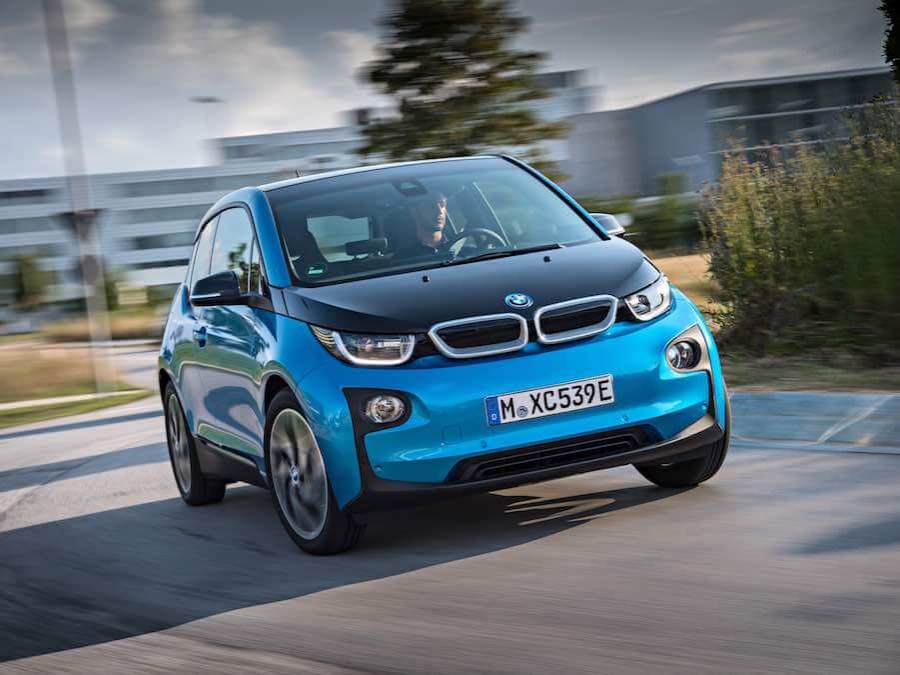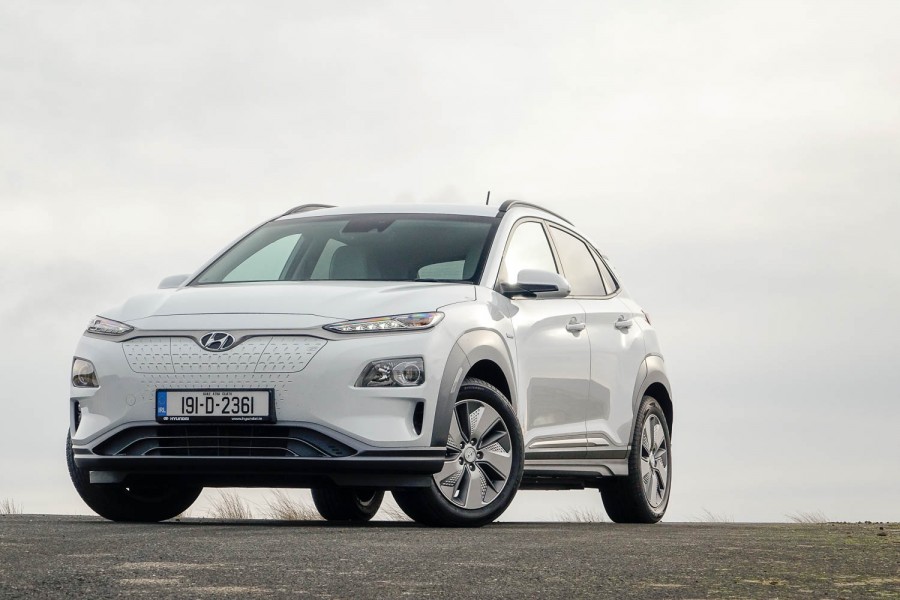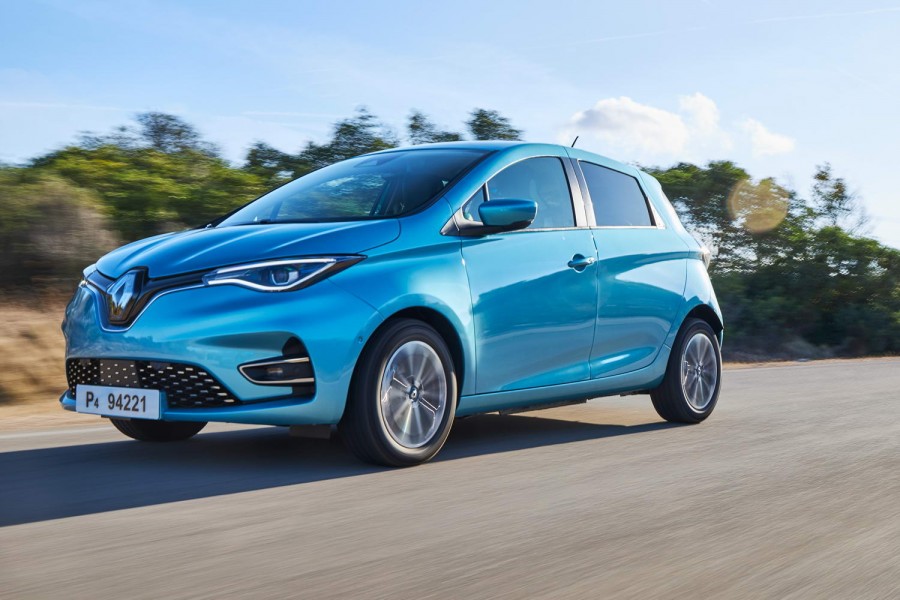The Honda e is a fully electric compact car designed first and foremost to appeal to style-conscious city dwellers. In Ireland, it doesn't really have any direct rivals as yet - it can't compete with other EVs on range, but it is leagues ahead when it comes to design and tech. You could say it is in a class of its own, though how successful it will be is likely to come down to price, which we don't know anything about as yet.
In the metal
A next-gen look with a nod to the past, the Honda e is designed to impress. And impress it does. With its cute exterior, the Honda e looks like no other, and what breath of fresh air that is.
It's minimalistic thanks to the flush door handles and lack of wing mirrors, which enhance its sleek looks. So too do the smooth surfaces, especially the stepless A-pillars and crease-free panels. Those round LED headlights are thoroughly modern, but at the same time feel quite retro. They give the car a friendly face and plenty of personality.
And that glass panel on the bonnet? That's for the charging port. It is more convenient in that location, but Honda is also making a statement with this design element about the car's electric nature.
The contemporary feel continues to the cabin. However, in contrast to the minimal design of the exterior, the interior is plush and lush with lots of lovely flourishes. Honda wanted to make the cabin more like a lounge, or your living room and, with its comfy seats and soft fabrics and other materials, it certainly makes it a very relaxing place to be.
As in most city cars, legroom for back passengers is limited, but headroom and shoulder room are great. Space for front-seat occupants is really good, and the large windows and sunroof let in loads of light making the cabin feel bright and airy.
But of course, the most eye-catching thing about the cabin is the dashboard dominated by screens. There are five in total. On each end of the dash are two six-inch displays that act as the door mirrors, there is an 8.8-inch driver's display and two 12.3-inch touchscreens as well. The screens instead of mirrors work really well and are in a very natural position, more so than the optional items in the Audi e-tron. It took just moments to get used to them. They are fully adjustable just like regular door mirrors, but the visibility is better - much better.
The two larger screens are great because it means you can have satnav on one and your smartphone mirrored on the other (the Honda e comes with Apple CarPlay and Android Auto). You can have pertinent driving info on one screen while your passengers scroll through the music library on the other.
There are also plenty of charging ports and connections inside, including a three-pin plug and HDMI port. This means you can turn the car into a mobile office (plug in your laptop and work away) or playroom - plug in your games console and keep players occupied. You may wonder what the point is. Well, many city dwellers are time and space poor, so Honda wants the e's cabin to be an extra room/space/area for its owners. It means you can be productive and make better use of your time when you are charging up, too.
Driving it
Let's talk about the range first. Honda wanted to build a small city car, so it decided to use a small 35.5kWh battery. The small battery means the car's range is shorter than most other EVs on the market. However, at 222km, the range should suit most urbanites - the average daily drive in Europe is just 40km after all. The smaller battery means it is faster to charge - 80 per cent in just 30 minutes using a CCS2 DC rapid charger. Again, trying to appeal to those time-poor city folks.
The battery is housed in the middle of the car and adds to the car's balance. The 50:50 weight distribution makes the Honda e feel planted and the independent suspension minimises body roll and lean, even when you're throwing the car around corners.
The steering and pedals have a nice weight to them and, thanks in part to the rear-wheel drive, the car is agile, easy to manoeuvre and has a bit of sparkle to the handling. Unlike a lot of electric cars, you do feel engaged and connected with the car and, with the instant-torque electric motor kick, the Honda e is fun to drive.
It has a ridiculously tight turning circle, again, perfect for those city streets, but it is no slouch on the motorway either. It can keep up with traffic without a problem.
The lack of engine noise and wind rushing past the exterior mirrors make the experience quieter and more relaxing than in most cars of this size, adding to the easy and enjoyable driving experience.
What you get for your money
While we do not yet have full Irish pricing for the Honda e, we do know that there will be two versions manufactured, the Honda e and the e Advanced. The Advanced is more powerful (154hp vs 136hp) and gets the option of 17-inch wheels. However, these reduce range to 210km compared with the standard 16-inch wheels.
Standard spec includes the Side Camera Mirror System, heated front seats, a reversing camera, panorama glass roof panel, privacy glass, LED headlights and plenty of safety kit too.
The Advanced model adds a nifty Parking Pilot system, which means that the car essentially parks itself, and it also gets a more powerful audio system. The Advanced model also gets a Multi-View Camera System, Centre Camera Mirror System and Blind Spot Information including Cross Traffic Monitor.
Summary
The Honda e is a likeable electric car with lots of personality. It is not only practical but desirable too. It is fun, funky and fresh with a forward-thinking connected cabin. It's an ideal city car that can also hold its own when venturing out of its urban habitat, but its limited range won't suit everyone. If the price is right though, Honda should have a winner on its hands.

